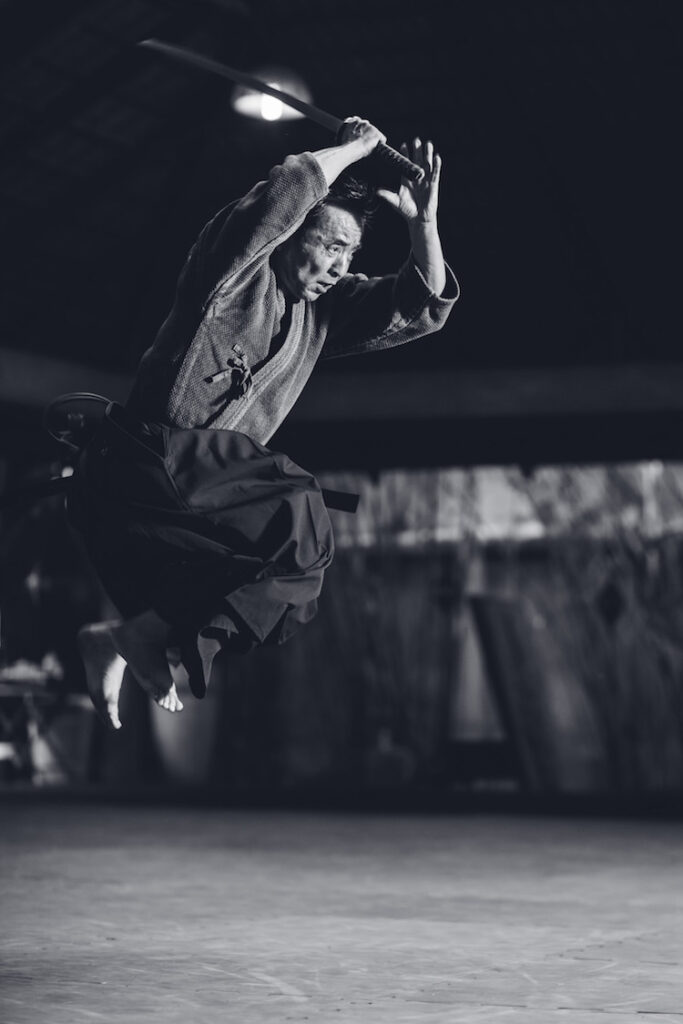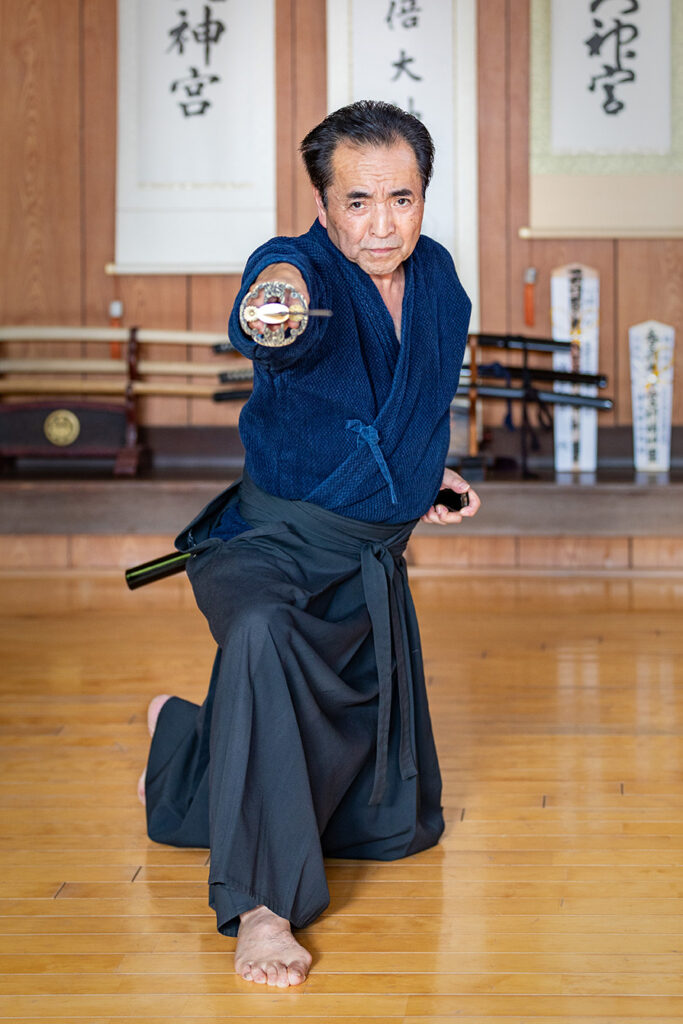Tradition
Katori Shinto Ryu is a comprehensive art that instructs in combat, strategy, philosophy, and character development.
Training methods include: kenjutsu (swordsmanship), iaijutsu (sword drawing), bojutsu (staff techniques), naginatajutsu (halberd techniques), ryotojutsu (twin swords), kodachijutsu (short sword techniques), sojutsu (spearmanship), jujutsu (unarmed combat) and shurikenjutsu (art of throwing spikes).
Studies on strategy include gunbaiho (troop movement and positioning), chikujoho (fortifications), jin’ei (troop formation), noroshi (smoke signaling), ninjutsu (espionage), and tenmon chiri fusui based on yin/yang and five element theory.
Below is the lineage of the ryu:
Founder: Iizasa Choisai Ienao – Morichika – Morinobu – Moritsuna – Morihide – Morishige – Morinobu – Morinaga – Morihisa – Morisada – Morishige – Moritsugu – Morikiyo – Nagateru – Moriteru – Morishige – Morifusa – Morisada – Kumajiro Yamaguchi – Sakuichiro Hayashi – Yazaemon Hayashi – Risuke Otake – Nobutoshi Otake.
The name of the ryu has been changed depending on the era. From the time of Yazaemon Hayashi Sensei, the name of the ryu became Tenshinsho-den Katori Shinto Ryu.
We not only practice the physical techniques of the art, we also place importance on its traditions, manners and courtesy and pass these down to future generations.


Joining the Tradition
Even today, those interested in joining the tradition must sign an oath to the deities of the Katori Shrine. This blood oath is a tradition that has been transmitted for generations. It ensures that aspiring students understand the correct attitude with which they are expected to approach entry to and study within the tradition.
Applicants pledge to uphold the following rules:
Oath to the Supreme Deities
On becoming a member of the Tenshinsho-den Katori Shinto Ryu, which has been transmitted by the Great Deity of the Katori Shrine, I herewith affirm my pledge that:
– I will not have the impertinence to discuss or demonstrate details of the ryu to either non-members or members, even if they are relatives;
– I will not engage in altercations or misuse the art against others;
– I will not engage in any kind of gambling or frequent disreputable places;
– I will not cross swords with any followers of other martial traditions without authorization.
I hereby pledge to firmly adhere to each of the above articles.
Should I break any of these articles I will submit to the punishment of the Great Deity of Katori and the Great Deity Marishiten.
Herewith I solemnly swear and affix my blood seal to this oath to these Great Deities.
Once completed, the applicant is recognized as a member of the tradition, with the pledge serving to teach them the correct approach toward the tradition and the learning process.
Learning Process
Students are taught kata (pre-arranged routines) that are studied and practiced together with more senior practitioners under the supervision of their teacher.
Training consists of the practice of prearranged forms that contain the art’s quintessence, and enables students to gradually acquire the art’s technical, theoretical and philosophical approach.
The first kata learned are as follows.
– Omote no tachi (swordsmanship: 4 kata)
– Omote iai (sword drawing: 6 kata)
– Tachiai batto (standing sword drawing: 5 kata)
– Bojutsu (staff techniques: 6 kata)
– Naginata (halberd techniques: 4 kata)
– Chudan bojutsu (staff techniques: 6 kata)
Students practice these kata over many months and years, and are eventually introduced to a wider range of instruction. Practitioners are awarded scrolls (Mokuroku, Menkyo, and Gokui Kaiden) in line with their development.
